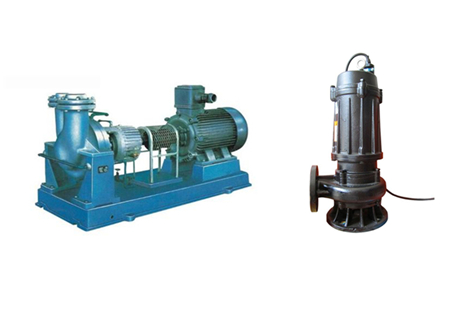Pumps for replenishing solvents or solutions in the device, such as superimposed new solvent replenishment pumps, ammonia recovery liquid replenishment pumps of chemical fertilizer plants, Benfil solution replenishment pumps, and initial charging lye pumps of ethylene devices. Generally, single-stage centrifugal pumps or vortex pumps are used for them. Supplementary pumps have the following features:
① The flow rate of the pump is not great; the head is not high, and the discharge pressure should be consistent with the replenishment.
② Generally work at room temperature.
③ Flow control is required for continuous pumping.
2. Sewage pumps
The pump used to discharge sewage and dirty liquid generally adopts a centrifugal impurity pump. Sewage pumps have the following characteristics:
① The flow rate and head are not great.
② There are water, oil and impurities in the dirty liquid, which requires the pump to have corrosion resistance and wear resistance.
③ Flow control is required during continuous transmission.
④ The structure requires consideration of anti-blocking, anti-air leakage and other measures.
① The flow is small, and the oil must be filtered and cooled before being recycled.
②The pressure of lubricating oil is generally constant at about 100 to 200kPa. The sealing oil pressure of the mechanical seal is 50 to 150MPa higher than that of the sealed medium; the sealing oil pressure of the oil film seal should be about 35 to 50MPa higher than the pressure of the sealed medium.
③ Lubricating oil and sealing oil have good lubricity, so rotor pumps should be used.
④ The fuel tank capacity and high tank capacity should ensure that the pump maintains sufficient time to operate, usually 5 to 10 minutes, so that measures can be taken in the event of an accident.
In addition, there are boiler feed water pumps, condensate pumps for waste heat boilers, coking water pumps for coking plants, ethylene jet decoking pumps, vacuum pumps for pressure reducing devices and other auxiliary pumps for special purposes.

